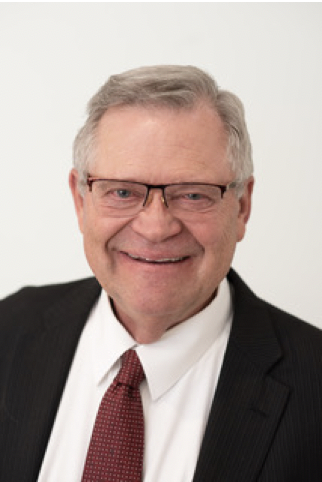Gould Lecture Series
About the Gould Lecture Series
The William R. and Erlyn J. Gould Distinguished Lecture on Technology and the Quality of Life was inaugurated October 7, 1992, at the University of Utah Marriott Library.
In establishing the lecture series, Bill and Erlyn Gould both recognized the critical need for continuing public education about issues regarding modern technology and its impact on our daily lives.
Inherent to the advantage of technology is the importance of understanding the ramifications and responsibilities that accompany modern scientific discovery. Only through continuing public education can scientific fact and social philosophy be successfully merged.
The lecture series is intended to provide a forum for the discussion of problems, issues, experiences, and successful case histories of the regeneration and preservation of our communities through the application of modern technology.
It is hoped that an increased awareness of obligation in the public trust will emerge among practitioners of technology as they address the very important environmental and life-deteriorating problems facing society today.
Through interaction between technologists and opinion leaders in communities that are the benefactors of their efforts, a synergism can develop through which society may see great benefit in the long-term future.
With the lecture series, it is intended that a dialogue be opened between the technologist, the philosopher, the humanist, the private citizen, and all who may wish to assert an active voice in our collective future.
In such an atmosphere of mutual interest and understanding, no one group will be singled out for exclusion or blame for society's ills; rather, through understanding, discourse, and public education the positive direction of our future may be shaped.
The Marriott Library's mission is to provide information in all formats sufficient to support the scholarship, teaching, and research programs of the University of Utah to its students and faculty, and to the citizens of the state.
In this light, the annual lecture will strive toward providing a greater public understanding of technology and the social potential that can be cultivated.
In conjunction with the Utah Science, Engineering, and Medical Archives program of the Marriott Library, the lecture series will provide the means of bridging the many disciplines of technology while meeting the needs of the public in understanding its rich and diverse technological heritage.
2019 William R. Gould, Jr.
Will the Green New Deal Shut Down Our Refineries and Power Plants?
or Where Will I Get My Power?
After Three Mile Island, no one believed the promises that a nuclear disaster couldn’t happen here. At about the same time, smog from coal plants upwind crept into Monument Valley and into the Grand Canyon. Power companies became the enemy. There were petitions, demonstrations, and lawsuits. It’s different overseas. In the managed economies of China, Russia, and in the Arab States, big fossil fuel and nuclear plants still dominate. But the last successful contract for a domestic nuclear plant was signed in 1973, and it’s doubtful that another large coal plant will ever again be built in this country.
Some wonder if the proposals of the Green New Deal are the solution. If we make all our buildings, cars, and planes more efficient, maybe we don’t need big utilities or oil refineries. After all, state regulators have broken the monopoly. Power companies no longer get to build what they want, when they want it. They have to compete with outsiders to provide the lowest-cost plants. And the regulators have opened utilities’ transmission lines to their competitors, too. In some states, most of the generating plants have been sold to outsiders. As their giant coal and nuclear plants reach their end of life, they are not being replaced by new coal or nuclear, but by smaller jet engine plants or by renewable energy from the wind and the sun.
The new power companies are increasingly you and I. It’s not just solar panels on our roofs. Factories and power-hungry data centers now build their own, smaller power plants “behind the meter” and only use the traditional grid for back up.
Still, skeptics ask, “Is the Green New Deal even possible?” Others wonder, “Is it perhaps inevitable?” One thing is certain. Where you get your electricity in the future will not be where you got it from in the past.
 Mr. Gould received bachelor’s and master’s degrees in Mechanical Engineering from BYU in 1972.
Mr. Gould received bachelor’s and master’s degrees in Mechanical Engineering from BYU in 1972. His career was spent in managing the design, construction, and operation of some of the largest and most complex power plants in the world. These power plants were fueled by coal, fuel oil, natural gas, nuclear, or most recently, by wind and by solar power. They include plants built overseas in Asia and Africa, as well as in several U.S. states.
He has been a frequent speaker at technical conferences and a consultant for the US Department of Energy and other industry groups. His most recent position was the Executive Vice President and Chief Technology Officer of the SolarReserve company, which built high temperature solar thermal power plants like the 110-megawatt Crescent Dunes station in Nevada, which has enough energy storage so that it can continue delivering electricity at full power all through the night.
But he counts as his greatest joy his marriage to the former Carol Howell of Provo, Utah, with whom he has been married for over 50 years, their seven children, 28 grandchildren and two great-grandchildren.
Contact
Special Collections
801-581-8863
Online Contact Form
Past Lectures
1992 Inaugural William R. Gould
2023 Dr. Tomasso Lenzi
2023 Dr. Jacob A George
2024 Dr. Fátima Rodriguez